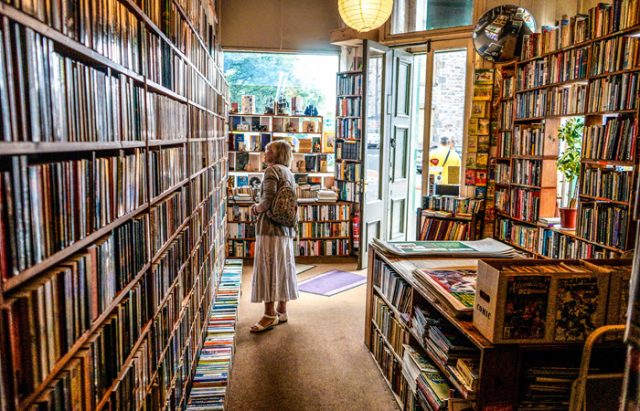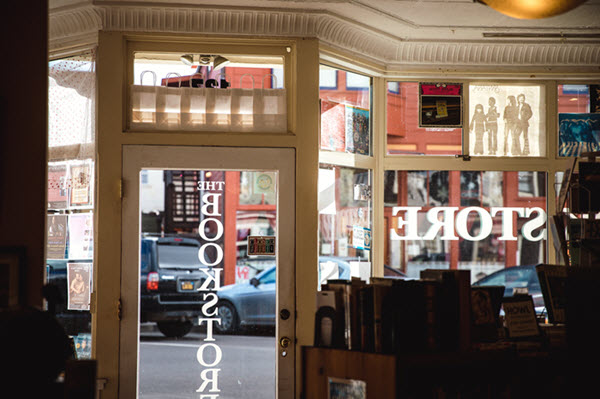What You Should Know About The Indie Bookstore Renaissance
By Mark Gottlieb
July 10, 2019 • Fact checked by Dumb Little Man

Indie bookstores have always been paradises for book lovers, offering a browsing experience unmatched by many other retailers. Just mind your way around the outdoor book carts on the way in and smell the old yellowing pages. You will know that you can't find these things elsewhere or online.
In the face of chain stores and online retailers, it's a sad reality that independent bookstores continue to struggle. We have gone from what might once have been thousands of independent bookstores in the United States down to 2,321 independent bookstores, as reported by the American Bookseller’s Association.
Just the other day, Book Culture announced that they would need a $500,000 cash infusion. The money is to keep their four stores going. It is an independent chain of four bookstores in New York City.
This all begs the question: how could hope for an indie bookstore “renaissance” possibly be on the way?
The answers might actually surprise you.
A historical view of indie bookstores

First, it might be important to look back on where indie bookstores came from. Historically, indie bookstores met the needs that book clubs could not, and vice versa. Independent bookstores and book clubs used to be very big. Publishers proudly sold book club rights for books to the major book clubs and indie bookstores could help make a book into a bestseller.
In searching out an independent bookstore before the internet age, it was very difficult for a farmer in a remote area of the country. He would have to drive miles just to find a store that might or might not have what he needs. Even though indie bookstores have always been a place for a sense of community, it was seldom a realistic place for those from far away.
Book clubs, such as The Book of the Month Club and the Doubleday Book Club, rose up to meet the needs of those individuals looking for a sense of community while reading in the comfort of their homes. On a regular basis, readers could know that they were receiving a carefully curated list of quality books to read and that there were others around the country reading those same books.
For those that lived in towns close enough to independent bookstores, the indies were important hubs to gain a sense of community. It's where they have book browsing experience and where they receive in-store book recommendations. Many bookstores were independently or family-owned, making them important staples within a town’s larger working community.
For those reasons, there used to be way more independent bookstores. That was before chain bookstores, mass merchandise retailers, big box stores, and online retailers entered the picture.
Is that not the nature of capitalism, though? Big fish eats the little one and all?
That still does not change the fact that many communities still have the same needs that places such as Barnes & Noble have tried to fill.
The Barnes & Noble purchase
While indie bookstores exist for book lovers, many subscribing to book retail still believe indies could end up as mausoleums to books. Though if indie bookstores end up as tombs for books, then Barnes & Noble could end up being the Taj Mahal if something were to happen to the chain bookstore.
Now, with the news that the major chain bookstore Barnes & Noble might have a potential buyer in Waterstones Books, new hope in Barnes & Noble has been renewed by readers and publishers. Waterstones being the United Kingdom’s equivalent of Barnes & Noble, could make for a bookstore that was more mindful of the tastes of readers in a traditional bookstore setting.
Readerlink had also joined the running as a potential bidder for Barnes & Noble. This could make Barnes & Noble into more of a data-driven company as Readerlink is very much so about drilling down into the data of book-buying habits. However, there is now talk that Readerlink may now be backing out of their potential bid for Barnes & Noble.
So, things could easily go awry again for Barnes & Noble in its long and turbulent history. This will create an opening for independent bookstores to fill the need that book clubs once did for the indies.
With Barnes & Noble currently on life support, its current CEO, Len Riggio is backing out. Some independent bookstores are slowly and steadily filling in the gaps in the book market in cities & small towns, making for something of a small renaissance among a few indie booksellers.
Small towns and neighborhoods in cities will still need their local bookstore, offering a unique and highly-curated book browsing experience—as well as a sense of community, especially after some of Barnes & Noble is already gone.
Indie bookstores as the new vinyl record shops

For those who have experienced the toxicity of social media and internet addiction, indie bookstores have eased their online suffering. It helped people reconnect with physical books. It served as a way for them to get away from screens and the coldness of technology.
Much of the readership of commercially-driven genre fiction are turning to the eBook reading space. Literary fiction is making a comeback and thriving among readers in hardcover and trade paperback books. The hardcover book, even in the age of eBooks, remains a technology that has been perfected for the reading experience. It's much in the same way that vinyl records make for the ultimate music listening experience for music aficionados.
It is easy to draw comparisons between music and books. Just see how some music connoisseurs believe good music deserves its time.
They believe that it should contain a highly tactile experience. Think of dusting off vinyl records and dropping the needle before later flipping a record. Much in the same way, serious readers want to hear the sound of turning pages, see the shine of foiled and embossed letters on a dust jacket or touch the texture of deckled edges.
Other readers are still looking to hold a book adoringly and be seen reading it on the subway. This all ties back to how, according to Forbes, the vinyl record industry has grown.
It is important to ponder how the same could happen for printed books at indie bookstores even in the internet age.
Some thoughts in closing
It might sometimes look bleak for independent bookstores, but book publishing has been obsessed with predicting its own demise. That's ever since the invention of the Gutenberg printing press. Back then, people thought it was the end of books. It turns out that it was only the beginning of something new.
We already know that indie bookstores are important to the larger book community of readers. There are a number of events that could bring on an indie bookstore renaissance, namely the continued fallout of Barnes & Noble or a continued movement of millennials toward the celebration of the physical book and independent bookstore.
However one might feel about indie bookstore renaissance, it is clear that there is a love for books among many readers. Bookstores are a place to celebrate that.
Why else would Indie Bookstore Day, with nearly 600 bookstores partying in participation, exist?
Mark Gottlieb
Mark Gottlieb | Literary Agent | Trident Media Group | [email protected] 355 Lexington Avenue, Floor 12 | New York, NY 10017 | (212) 333-1506 | tridentmediagroup.com







